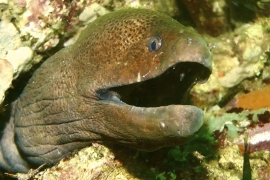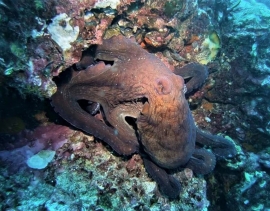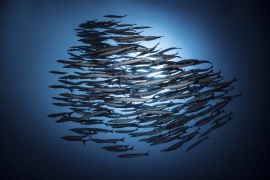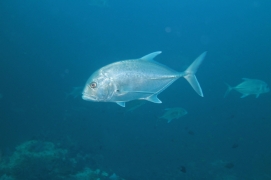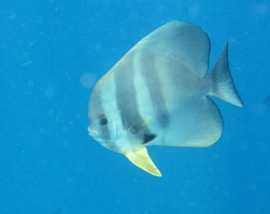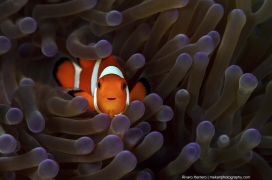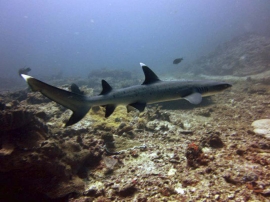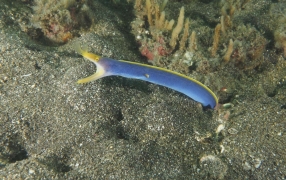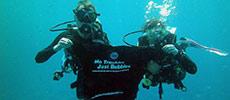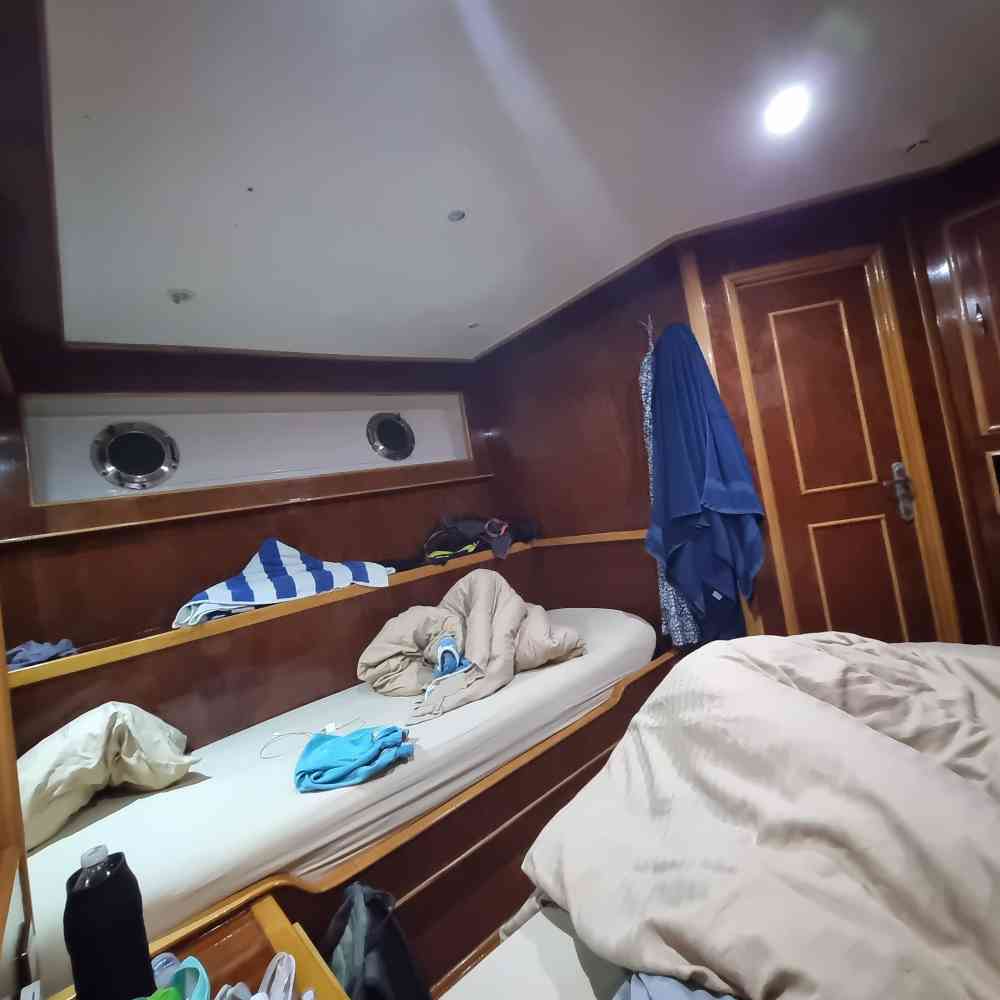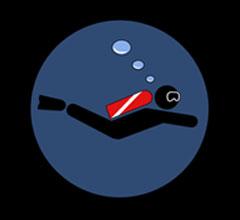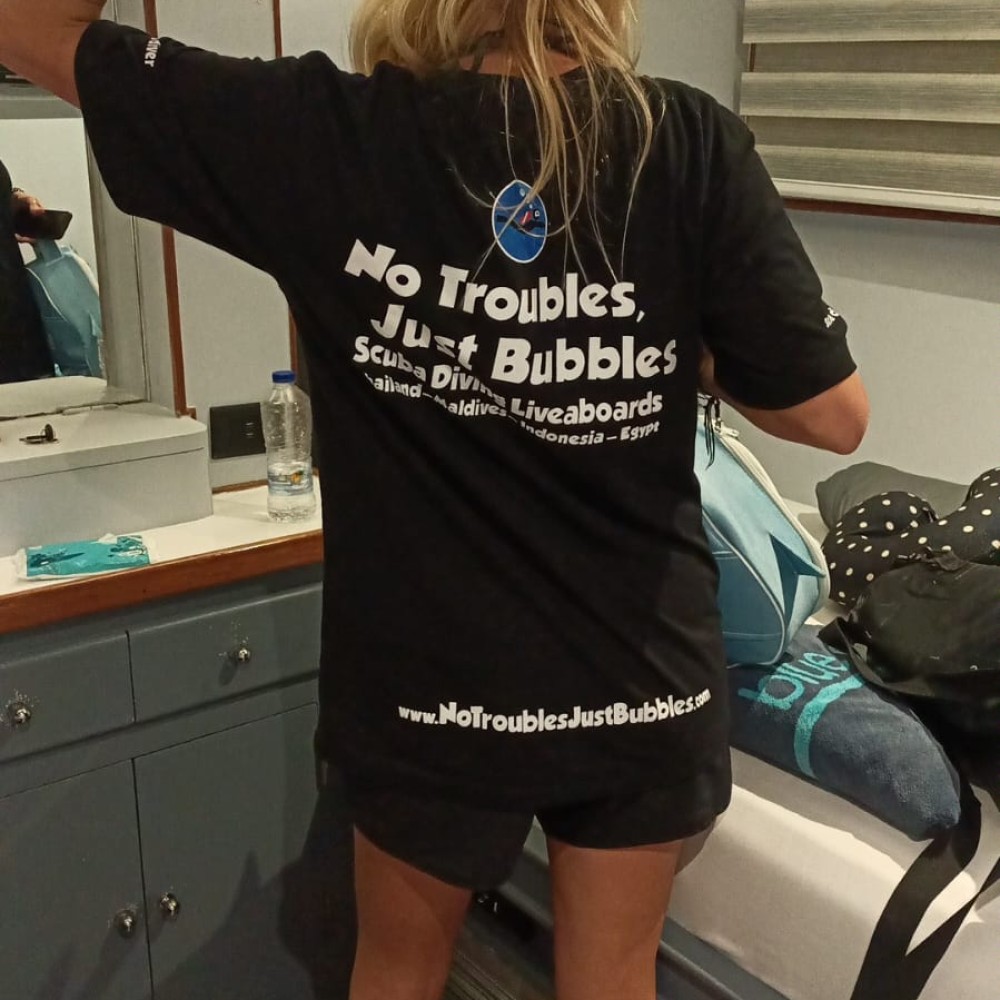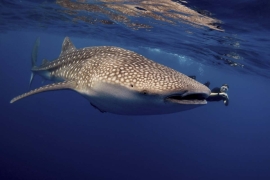
Ras Mohamed Liveaboard Diving
Probably the most-popular area for scuba diving in Egypt and The Red Sea, Ras Mohamed has something for everyone. Its popularity is thanks to its location that allows for day trip diving as well as learning to scuba dive. Plus there's a vast amount of marine life there, including sharks. There are more than a dozen great dive sites, with all kinds of conditions. Finally, it's possible to dive there all year round. It's not the best dive area in The Red Sea, but it is the most popular, and it's very very good!

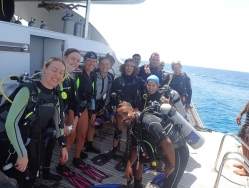 Located at where The Red Sea meets The Sinai Peninsula, and where the sea splits into The Gulf of Suez and The Gulf of Aqaba, Ras Mohamed is the ideal place to enjoy great scuba diving in The Red Sea. The area is Egypt's first protected national park area, gaining its status in 1983, and growing in size over the years. The name comes from the Arabic word Ras meaning 'head' or 'cape' plus a cliff that to some appears to be shaped by the wind to resemble the Prophet Mohamed/Mohammed.
Located at where The Red Sea meets The Sinai Peninsula, and where the sea splits into The Gulf of Suez and The Gulf of Aqaba, Ras Mohamed is the ideal place to enjoy great scuba diving in The Red Sea. The area is Egypt's first protected national park area, gaining its status in 1983, and growing in size over the years. The name comes from the Arabic word Ras meaning 'head' or 'cape' plus a cliff that to some appears to be shaped by the wind to resemble the Prophet Mohamed/Mohammed.
The area is home to plenty of exciting scuba dive sites. Some are world-class, some only suitable for experienced scuba divers, and some are fine for all levels from absolute beginner. Most of the dive sites are reefs and walls, but there's at least one wreck as well. On the exposed sides, the walls can drop off into very deep water, and currents can be strong at times. But there's always somewhere for divers who don't like or are not ready to experience extreme conditions. Nutrient-rich water comes from three different directions, ensuring that the resident & visiting marine life can flourish. From the north east, water comes from The Gulf of Aqaba, which is more than 100 miles long and a mile deep. Even longer and wider than Aqaba is The Gulf of Suez, which is to the northwest of Ras Mohamed but only 250 metres deep. And of course to the south is a 2,000 km. stretch of The Red Sea, that is more than two kilometres deep in places and has prehistoric submarine volcanic activity.
 Ras Mohamed is regarded by many as one of the best places to dive in Egypt for several reasons. Some of these are that it's possible for all levels of scuba diver to enjoy. Not only are there areas for learning to dive, but there are some excellent dive sites for advanced and professional divers to get excited about. Also, it's easy to get to, either by day trip boat from Sharm El-Sheikh or by diving liveaboard safari, and it's possible to dive here all year round. But these reasons are for our 'convenience' and it's unfair to say that's why liveaboard diving at Ras Mohammed is so good. It's important to acknowledge that the area has been protected by the government for nearly 40 years because of its natural beauty. This beauty goes way below the surface of the crystal-clear water, with plenty of world-class dive sites that even hardened divers can truly enjoy. Most Ras Mohamed dive sites are on the eastern side. Probably the two best dive sites in Ras Mohamed are Shark Reef and Yolanda Reef. These dive sites are almost next to each other at the southeastern tip of Ras Mohammed's peninsula. They're so close to each other that it's possible to both in one dive in the right current. On the eastern sides of these dive sites, there are near-vertical walls that drop off into very deep water. If the currents are strong enough and in the right direction, it's often possible to drift from one dive site to the next, for example from Shark Reef to Yolanda reef or onto Satellite Reef, or in the opposite direction to Anemone City.
Ras Mohamed is regarded by many as one of the best places to dive in Egypt for several reasons. Some of these are that it's possible for all levels of scuba diver to enjoy. Not only are there areas for learning to dive, but there are some excellent dive sites for advanced and professional divers to get excited about. Also, it's easy to get to, either by day trip boat from Sharm El-Sheikh or by diving liveaboard safari, and it's possible to dive here all year round. But these reasons are for our 'convenience' and it's unfair to say that's why liveaboard diving at Ras Mohammed is so good. It's important to acknowledge that the area has been protected by the government for nearly 40 years because of its natural beauty. This beauty goes way below the surface of the crystal-clear water, with plenty of world-class dive sites that even hardened divers can truly enjoy. Most Ras Mohamed dive sites are on the eastern side. Probably the two best dive sites in Ras Mohamed are Shark Reef and Yolanda Reef. These dive sites are almost next to each other at the southeastern tip of Ras Mohammed's peninsula. They're so close to each other that it's possible to both in one dive in the right current. On the eastern sides of these dive sites, there are near-vertical walls that drop off into very deep water. If the currents are strong enough and in the right direction, it's often possible to drift from one dive site to the next, for example from Shark Reef to Yolanda reef or onto Satellite Reef, or in the opposite direction to Anemone City.
Popular Dive Sites in Ras Mohamed
Shark Reef
Shark Reef lies just 200 metres from the tip of the peninsula and it's 65 metres long and 45 metres across. Due to its location and the very deep water to its eastern side, there is a good chance of seeing sharks here, especially for liveaboard divers early in the morning. The reef is covered in hard & soft corals which are very healthy. Enjoy plenty of schooling fish just off the reef, and smaller fish and invertebrates are all over the corals and fans.
Yolanda Reef
Yolanda Reef is right next door to Shark Reef, making it a great idea to dive one after the other. It's also very similar in size and shape. It's a great place to see sharks early in the morning, or as the final dive of the day, after the day-trip boats have left. The water to the south and east is also very deep here and it's worth keeping an eye on your computer as well as out into the blue.
Yolanda Wreck
Yolanda Wreck is special in many ways. It was a 75-metre-long vessel carrying a large cargo of bathroom ware, mostly made up of toilets. It sank in 1980, right next to Yolanda Reef on its western side. For a few years it was a popular recreational wreck dive, but during a storm in 1985 the wreck slipped off the reef and was lost. 20 years later (2005) two British divers located the reef at 145+ metres below the surface, breaking a record for the deepest wreck dive. Nowadays, only the cargo of toilets and bathtubs are within reach of recreational divers.
Satellite Reef
Next to Yolanda Reef to the west is Satellite Reef, that is about half Yolanda's size. To its north and west, the water is quite shallow, with a vast plateau to explore. But to the south and east is a drop off to very deep water.
Anemone City
North of Shark Reef is Anemone City, which obviously gets its name from the vast area covered by anemones of several species and filled with resident Anemonefish, crabs and shrimps. This dive site has several levels or mini-plateaus to explore, and even though it's colourful and covered in life, don't forget to keep one eye out in the blue for a passing shark. It's good to dive here early in the day, with the sunshine from the east, and fewer divers to scare away shy species of fish, and maybe sharks.
Shark Observatory
Shark Observatory is further to the north, and located on the peninsula's westernmost point. This dive site obviously got its name from the number of sharks that could be seen here, but sadly there are very few left now. Early-morning divers might see some Whitetip Reef Sharks in deeper areas. But even without sharks this dive site is well worth visiting. There are lots of medium-size and large fish here, plus huge shoals of smaller species. The near-vertical wall drops down to nearly 100 metres, meaning that there's the chance of almost anything showing up if you're lucky.
Other dive sites in Ras Mohamed include
- Jackfish Alley
- Eel Garden
- Ras Za'tar
- Ras Burg
- Ras Ghozlani
Conditions at Ras Mohamed
When to dive at Ras Mohamed
You can dive at Ras Mohammed / Mohamed all year round. However, the sea is noticeably cooler in the winter (November to April) with the coolest month being February. June to August is the most popular time with the warmest water.
What type of dive site is Ras Mohamed
Ras Mohamed is a national marine park with more than a dozen dive sites. These are mainly coral reefs, but include at least one wreck, shore dives and plenty of walls to drift along.
Where is Ras Mohamed?
Ras Mohammed / Mohamed is at the northern tip of The Red Sea, where it splits into the Gulfs of Suez and Aqaba. The area's centre is the southern tip of The Sinai Peninsula.
How to get to Ras Mohamed
Access to Ras Mohamed / Mohammed is possible by day trip boat from the local area, including Sharm El-Sheikh. However, everyone must leave before sunset, when the park closes. To best enjoy diving at Ras Mohamed, join a liveaboard diving safari. Doing this enables you to jump in before day trip boats arrive, and you can explore several dive sites in one day.
Who can dive at Ras Mohamed
There are enough varied dive sites here for all levels of scuba diver, including those who have never dived before. For Advanced or even professional divers there are plenty of opportunities to dive deep, in a strong current and with predatory sharks.
What marine life can you see at Ras Mohamed?
Although being quite close to the shore, there's an excellent selection of marine life to be seen at Ras Mohamed. This includes Hammerhead Sharks, and other large and/or pelagic shark species. Ras Mohammed is where The Red Sea slipts into The Gulf of Suez and The Gulf of Aqaba. Therefore, currents, depth, and several other natural factors ensure that marine life here is varied, abundant and healthy.
Summary of Ras Mohamed
Ras Mohammed / Mohamed is one of the most-popular dive areas in The Red Sea, and for good reason. It's easy to get to by day trip or liveaboard diving boat. It has something for all levels of scuba diver. You can dive there all year round, and there's plenty of marine life in all shapes and sizes. The water is coolest in February, and the busiest month is August, when the water is warmer and Europeans are on summer holiday.

